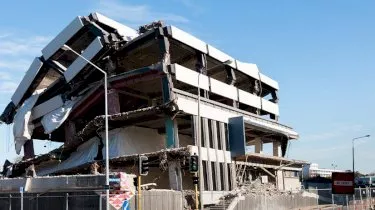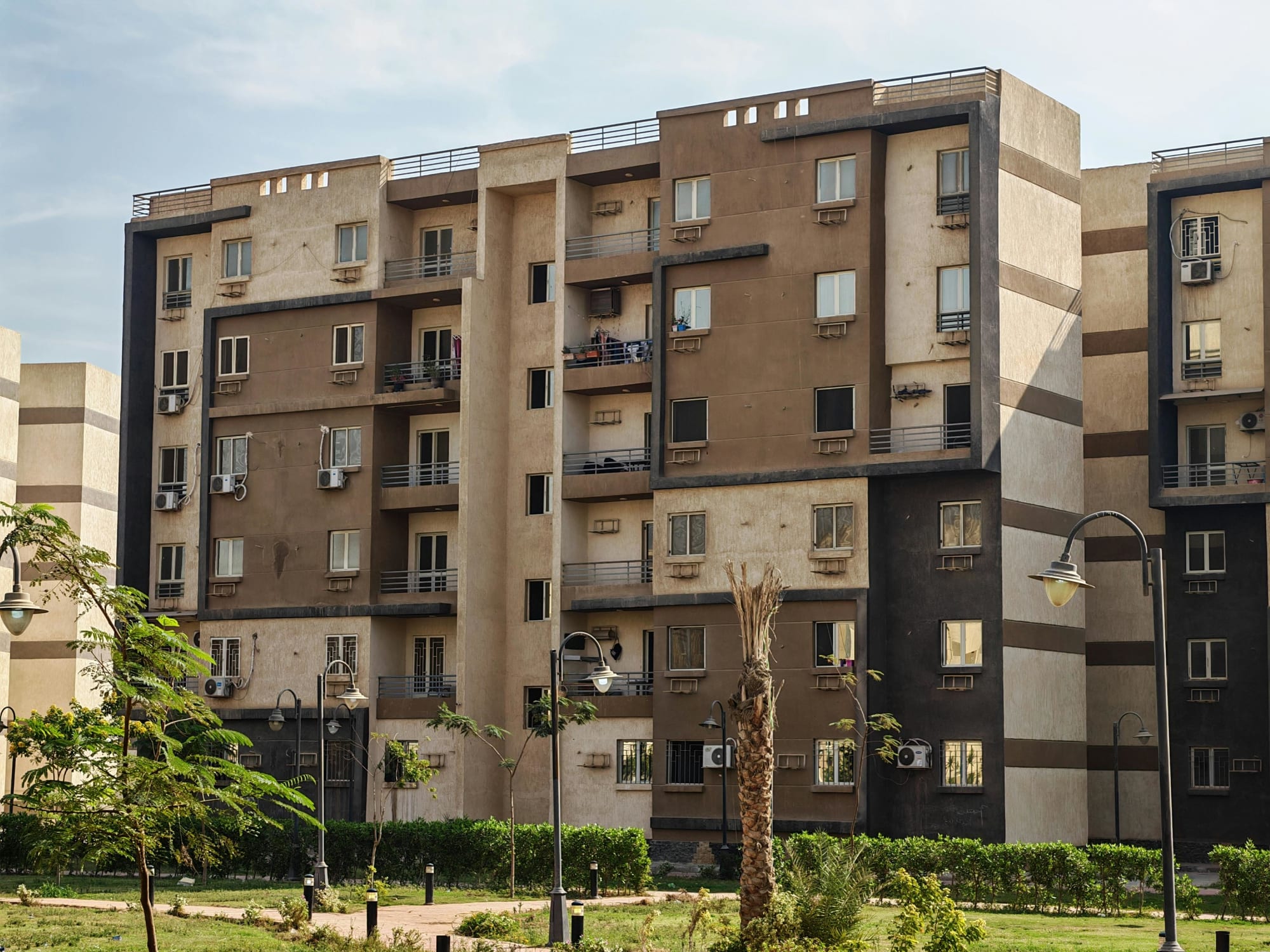Invest
‘Tip of the iceberg’ for dodgy buildings in real estate’s ‘bubonic plague’
Invest
‘Tip of the iceberg’ for dodgy buildings in real estate’s ‘bubonic plague’
Reports of stress fractures in newer buildings hint of the beginning of a serious problem for Australian real estate, two experts have warned.
‘Tip of the iceberg’ for dodgy buildings in real estate’s ‘bubonic plague’
Reports of stress fractures in newer buildings hint of the beginning of a serious problem for Australian real estate, two experts have warned.

For Right Property Group’s Steve Waters, the problem will get a lot worse before it gets better, while Propertyology’s Simon Pressley has called the situation a ‘bubonic plague’.
The new build problem
Today’s buildings are not built with the same care as yesteryear, according to the experts, who outlined more historical buildings as thoughtfully engineered with craftsman-level building techniques and durable materials.
“These are structures established to withstand several lifetimes of exposure and designed to provide their residents with a functional, practical and resilient home,” Mr Waters offered.

“They still stand strong today – a far cry from the buildings being thrown up in the modern era,” he continued.
According to Mr Pressley, the construction and design of Australian buildings “since the mid-1990s is such that they’ll be lucky to last 40-50 years”.
He went on to consider the factors of “same-same mass-produced Lego buildings, appalling governance within the Australian construction industry, embarrassingly poor-quality workmanship and approximately 40 per cent of the purchase price of a new property representing assorted taxes” as a toxic combination.
The tip of the iceberg
Mr Waters said recent mainstream news reporting on construction problems is “the tip of a very dire iceberg”.
He noted most of the troubled unit towers as falling squarely into the investor sector.
“That’s the very area where there is a pipeline of stock under construction and due to be released.”
At the moment, there are hundreds of purchasers waiting for their new tower units to be completed, and they’re watching the latest reports of stress fractures and forced vacancies with wide-eyed anxiety, according to the buyer’s agent.
For Mr Pressley, there are a number of reasons why such investor concern is warranted, and explained “substandard materials and workmanship within a high percentage of buildings from the mid-1990s onwards has led to major structural defects, foundation cracking, serious waterproofing issues, combustible cladding and general fire safety concerns, fragile balconies and fittings with very low lifespan”.
How widespread is the issue?
The Strata Community Association of NSW (SCA) recently reported that it estimates well over 10,000 apartments in NSW, Queensland and Victoria may be affected by inflammable cladding alone.
Alongside this, SCA NSW president Chris Duggan also highlighted that “we still have hundreds of kilometres of poor-quality electrical cabling that poses a fire risk in NSW, and we can’t track it down”.
He also flagged issues with the use of “poor quality Chinese-made glass panels” that allegedly are able to explode under stress.
With a 2012 UNSW study indicating that 85 per cent of buildings built since 2000 and up until the study’s release having at least one significant defect in their complex, Mr Pressley considered that the ‘bubonic plague in the real estate industry” could become a $10 billion-dollar national disaster.
Who’s to blame?
A combination of developers, construction contractors and government officials are to blame for this widespread problem, Mr Waters indicated.
“I speculate that greed has played a major role in the scenario,” he said.
“And it’s not just developers willing to cut corners in order to make a bigger margin on their project either.”
Mr Waters also pointed fingers towards those who certify these projects, and to “construction contractors who may have been willing to compromise on elements of the build to win a deal”.
“There might even be councils who benefit from higher density projects in their jurisdiction who have been willing to negotiate building guidelines in order to promote development,” he continued.
About the author

About the author


Property
Australia’s mortgage knife‑fight: investors, first‑home buyers and the new rules of lender competition
The mortgage market is staying hot even as rate relief remains elusive, with investors and first‑home buyers chasing scarce stock and lenders fighting for share on price, speed and digital experienceRead more

Property
Breaking Australia’s three‑property ceiling: the finance‑first playbook for scalable portfolios
Most Australian investors don’t stall at three properties because they run out of ambition — they run out of borrowing capacity. The ceiling is a finance constraint disguised as an asset problem. The ...Read more

Property
Gen Z's secret weapon: Why their homebuying spree could flip Australia's housing market
A surprising share of younger Australians are preparing to buy despite affordability headwinds. One in three Gen Z Australians intend to purchase within a few years and 32 per cent say escaping rent ...Read more

Property
Tasmania’s pet-positive pivot: What landlords, BTR operators and insurers need to do now
Tasmania will soon require landlords to allow pets unless they can prove a valid reason to refuse. This is more than a tenancy tweak; it is a structural signal that the balance of power in rental ...Read more

Property
NSW underquoting crackdown: the compliance reset creating both cost and competitive edge
NSW is moving to sharply increase penalties for misleading price guides, including fines linked to agent commissions and maximum penalties up to $110,000. Behind the headlines sits a more ...Read more

Property
ANZ’s mortgage growth, profit slump: why volume without margin won’t pay the dividends
ANZ lifted home-lending volumes, yet profits fell under the weight of regulatory and restructuring costs—an object lesson in the futility of growth that doesn’t convert to margin and productivityRead more

Property
Rate pause, busy summer: where smart capital wins in Australia’s property market
With the Reserve Bank holding rates steady, the summer selling season arrives with rare predictability. Liquidity will lift, serviceability stops getting worse, and sentiment stabilises. The ...Read more

Property
The 2026 Suburb Thesis: A case study in turning trend lists into investable strategy
A new crop of ‘suburbs to watch’ is hitting headlines, but translating shortlist hype into bottom-line results requires more than a map and a mood. This case study shows how a disciplined, data-led ...Read more

Property
Australia’s mortgage knife‑fight: investors, first‑home buyers and the new rules of lender competition
The mortgage market is staying hot even as rate relief remains elusive, with investors and first‑home buyers chasing scarce stock and lenders fighting for share on price, speed and digital experienceRead more

Property
Breaking Australia’s three‑property ceiling: the finance‑first playbook for scalable portfolios
Most Australian investors don’t stall at three properties because they run out of ambition — they run out of borrowing capacity. The ceiling is a finance constraint disguised as an asset problem. The ...Read more

Property
Gen Z's secret weapon: Why their homebuying spree could flip Australia's housing market
A surprising share of younger Australians are preparing to buy despite affordability headwinds. One in three Gen Z Australians intend to purchase within a few years and 32 per cent say escaping rent ...Read more

Property
Tasmania’s pet-positive pivot: What landlords, BTR operators and insurers need to do now
Tasmania will soon require landlords to allow pets unless they can prove a valid reason to refuse. This is more than a tenancy tweak; it is a structural signal that the balance of power in rental ...Read more

Property
NSW underquoting crackdown: the compliance reset creating both cost and competitive edge
NSW is moving to sharply increase penalties for misleading price guides, including fines linked to agent commissions and maximum penalties up to $110,000. Behind the headlines sits a more ...Read more

Property
ANZ’s mortgage growth, profit slump: why volume without margin won’t pay the dividends
ANZ lifted home-lending volumes, yet profits fell under the weight of regulatory and restructuring costs—an object lesson in the futility of growth that doesn’t convert to margin and productivityRead more

Property
Rate pause, busy summer: where smart capital wins in Australia’s property market
With the Reserve Bank holding rates steady, the summer selling season arrives with rare predictability. Liquidity will lift, serviceability stops getting worse, and sentiment stabilises. The ...Read more

Property
The 2026 Suburb Thesis: A case study in turning trend lists into investable strategy
A new crop of ‘suburbs to watch’ is hitting headlines, but translating shortlist hype into bottom-line results requires more than a map and a mood. This case study shows how a disciplined, data-led ...Read more








